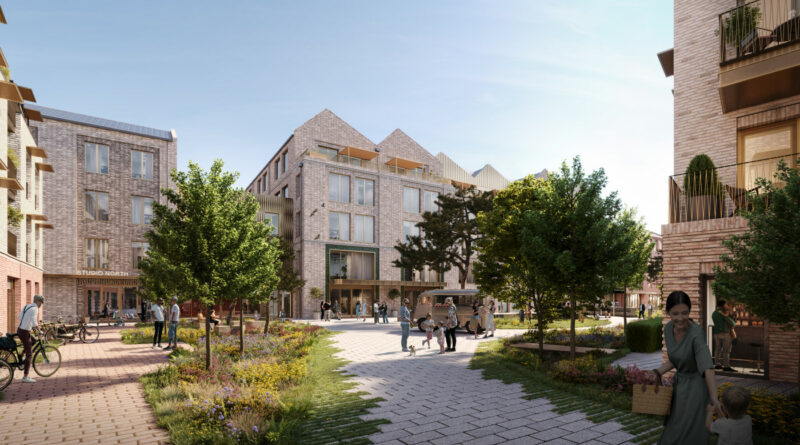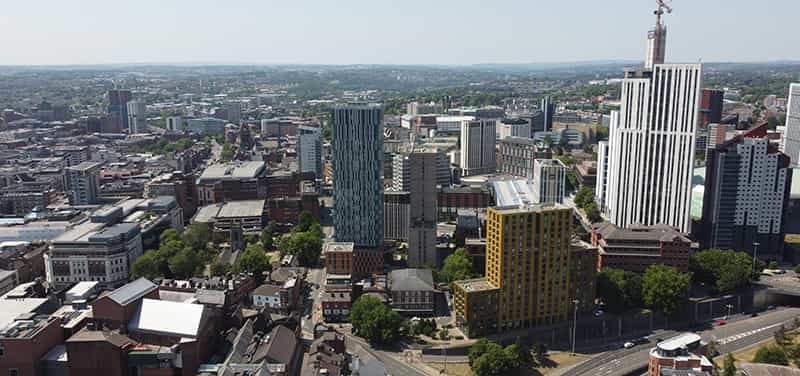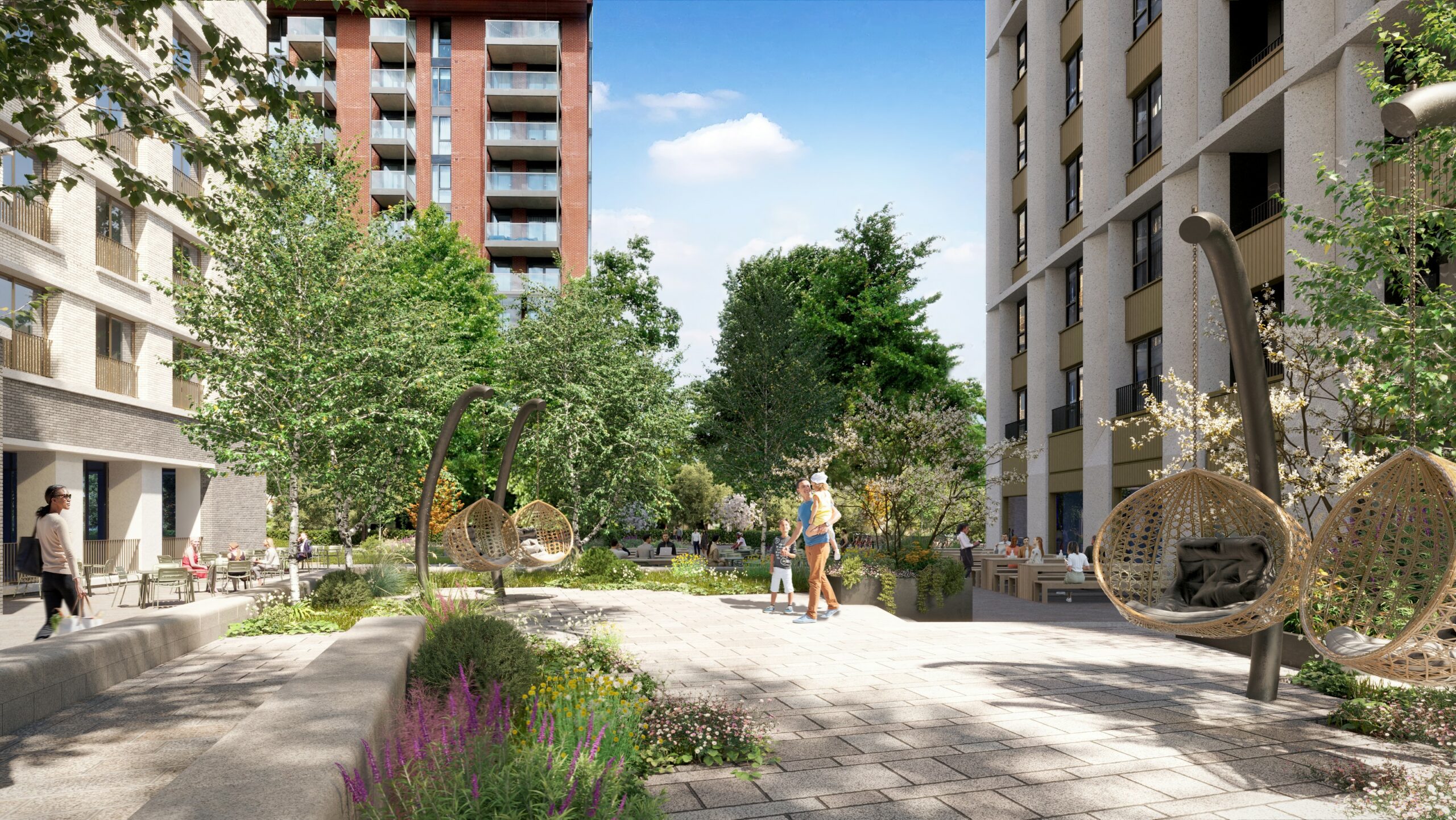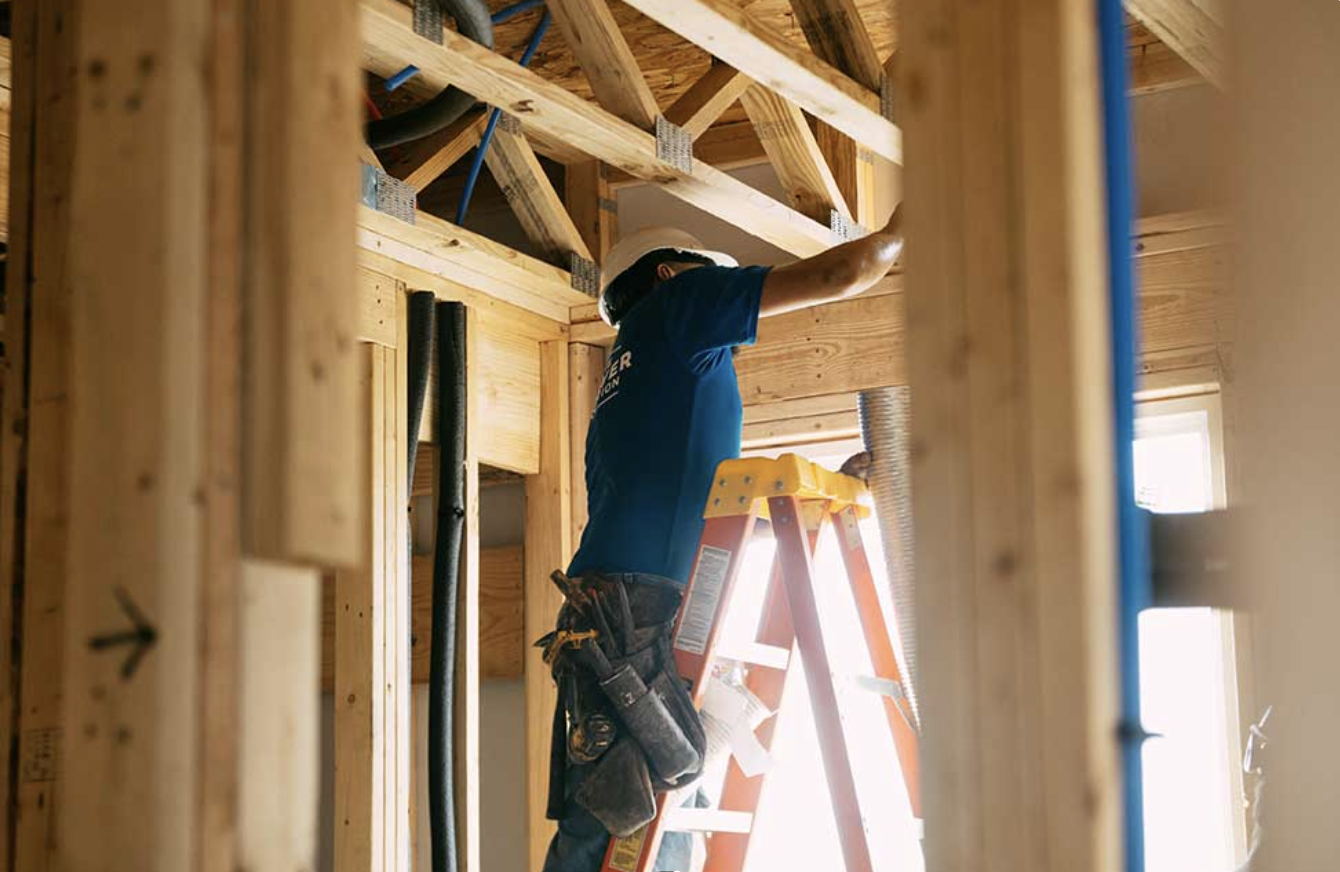BTR has the potential to increase the quality and quantity of UK housing delivery, but planning policy is not keeping up with the sector’s evolution, says Emily Grapes of Carter Jonas.
BTR has experienced rapid growth in the last decade, since the undertaking of the Montague Review in 2012, and the subsequent creation of a £1.1 billion BTR fund in 2013 to incentivise related construction. Approximately 253,402 BTR units were completed, under construction, or in the planning pipeline as of June 2023.
Infinite potential
Recognised as a separate housing tenure within the National Planning Policy Framework (NPPF), BTR is characterised as larger scale purpose-built housing with the provision of onsite amenity facilities and hotel-style accommodation for exclusive use within the private rental sector (PRS). BTR has been largely targeted at ‘Generation Rent’ to reflect their increased reliance upon the PRS as a form housing tenure, with particular focus on young professionals aged from 25 to 35 and on incomes of £25,000 to £40,000.
Policy prototype
London, with a large PRS and well documented housing affordability crisis, has been at the epicentre of BTR growth and therefore associated planning policy development to guide such growth, namely in Policy H11: Build to Rent of the London Plan (2021). The policy explicitly acknowledges the difference in viability and operation of BTR models in contrast to Build for Sale and sets out a list of criteria for what constitutes a BTR scheme. Further BTR guidance is then contained in the London Mayor Affordable Housing and Viability SPG.
Policy vacuums
Whilst there has been a geographical bias towards London, 122,499 BTR units were located outside of London as of 2021. Nonetheless, despite over a decade since the inception of the BTR as a new housing tenure, many local planning authorities are yet to ‘catch up’ both in the delivery of BTR as a housing tenure and with policy adoption.
Cambridge is a notable example given its BTR potential: the city has experienced significant growth in the last decade from a population of 123,867 at the 2011 Census to 145,700 in 2021. This 17.6% increase is the result of an increasing number of workers seeking accommodation within the city, fuelled by the ‘Cambridge Phenomenon’.
Since the mid-1960s, Cambridge has developed into a key knowledge agglomeration centre of high-tech and biomedical companies, with more than 5,000 companies, including Amazon, AstraZeneca and Microsoft employing 68,000 employees and forming part of the UK ‘Golden Triangle’ together with London and Oxford. The Cambridge Biomedical Campus (the largest employment site in Cambridge and a global research facility hub for life sciences), alongside spinouts from the University of Cambridge has, over the last two decades, created a total value of £2.6 billion. These two examples are clear evidence of the city’s ability to deliver economic growth.
This growth however has presented significant housing affordability and supply challenges, with median house prices 12.4 times higher than median incomes, exacerbating demand for the Cambridge PRS. 70% of the Cambridge PRS is comprised of those aged between 20-39, aligning with ‘Generation Rent’, imposed with high average monthly rents of £1,285.
Consequently, the PRS is now an increasingly significant housing tenure in Cambridge, comprising 31 per cent of Cambridge households. But despite this, no BTR development has come forward in the city, and only one scheme is in the planning pipeline.
Whilst it is important to acknowledge a number of factors affecting BTR scheme viability, including varying land values and availability, Cambridge highlights the need for the ‘catch-up’ process to be undertaken in a number of regulatory contexts.
Both the currently adopted Cambridge City Council Local Plan and South Cambridgeshire Local Plan, both adopted in 2018, do not contain BTR policies or reference BTR. Planning for the two councils is now undertaken by the Greater Cambridge Shared Planning Service and its Housing Strategy (2019-2023) now includes, Annex 9: Build to Rent policy, as of July 2021. This sets out the planning authority’s approach for BTR schemes and is a material consideration for future prospective BTR developments.
The emerging Greater Cambridge Local Plan also contains a draft Policy H/BR: Build to rent homes. This demonstrates that both councils are supportive of the delivery of BTR and describes the approach to be taken to such developments, also listing perceived potential ‘pros and cons’ and evidence of demand. However, the emerging Local Plan is still at the Regulation 18 stage and therefore there is no currently adopted Local Plan position on BTR.
A need for policy nationally
With the exception of London, there is clearly a lack of adopted and consistent BTR planning policy throughout the UK, and therefore ambiguity across various urban contexts. The absence of policy challenges the principle of BTR development and ease of scheme progression in site-specific projects.
More detailed and consistent policy development is required to ensure that BTR can deliver its posited remit – that is: delivery of a superior and consistent quality of PRS, a quickness of supply, and on-site facility provision, all enabling a ‘security of tenure’.
Whilst private sector involvement is fundamental to BTR delivery, such delivery is ultimately dependent on, and directed by, the specific regulatory and political environment. This is important when guiding future BTR schemes, to ensure that the benefits of BTR materialise. This includes the potential for improving community assimilation, such as ‘on your doorstep’ amenities, and maximising accessibility and affordability.
This ultimately demonstrates the still yet unknown concerning BTR in different geographical contexts. Therefore, there still remains a need for further development and clarity in BTR policy. Detailed BTR policy with key design criteria can help to avoid market perceived narratives and design preferences which may result in a reduction, rather than improvement, in the quality of BTR accommodation and thereby risk reducing accessibility to families and those of lower socio-economic status.
More active collaboration between local planning authorities and developers to ensure BTR schemes are delivered at genuine affordable rent levels is required. For example, the discounted rents being calculated from the average of three separate rent valuations from the relevant area, or a policy explicitly stating which groups would be eligible for the proportion of BTR affordable units.
Conclusion
BTR offers a possibility to positively address housing quality, supply and community integration and provides an additional housing tenure for a group increasingly fronted with issues of housing instability. Further corroboration between local planning authorities and the market can clarify ambiguities and help aid the development of BTR schemes, ultimately providing greater ‘security of tenure’ for a wider demographic.
Emily Grapes is a senior planner in Carter Jonas‘ planning and development team, based in Cambridge.








